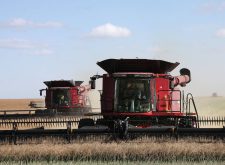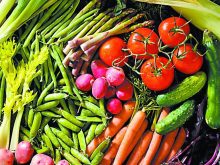Challenges growing | Food processors see mix of closures and investment
The recent headlines for Canada’s food industry have been ugly: Heinz plant closes in Leamington, Ont., Kellogg’s shuts doors on London plant, 500 laid off.
It appears as if food processing is on life support in Canada but the underlying story is more positive, says David Sparling, an Ivey Business School professor.
In a new report called The Changing Face of Food Manufacturing in Canada, Sparling said closures attract attention, and deservedly so.
“Job losses are devastating to the employees and often to the entire community where the plant is located,” Sparling wrote in the report, which was released in mid-March and is one of a series on the nation’s food processing sector published by the Canadian Agri-Food Policy Institute (CAPI).
Read Also

Farmland ownership fires up Saskatchewan politicians
Saskatchewan politicians debate the enforcement of farmland ownership laws in the province.
The closures may dominate the news, but companies are also investing and building food manufacturing plants in Canada.
Dr. Oetker, a frozen pizza maker, is building a $70 million production plant in London, Ont. Canada Bread spent $100 million on a bakery in Hamilton. Maple Leaf Foods is spending nearly $400 million on a processed meat plant in Hamilton.
Sparling, chair of agri-food innovation at Ivey, said the strong Canadian dollar forced the industry to restructure in the 2000s as food manufacturers shuttered small, inefficient plants.
“We saw more closings around that 2006, 2007, 2008 period … because industry was pretty much reeling from this high dollar,” he said.
“(After that), companies said, ‘we’ve got to get our factories bigger and they have to be more focused and we have to get new technology.’ ”
Sparling said 143 Canadian food plants closed in 2006-14, while 63 plants opened and 67 companies announced major investments.
Canada’s food industry was relatively resilient to the recession compared to other sectors. Revenues increased 7.85 percent in 2008-11 while other manufacturers were losing money and slashing jobs.
“Revenue never dipped in the recession…. It kept growing every single year,” Sparling said.
“And the capital investment started to pick up around 2010…. This is an industry that’s been through some really tough times but has restructured itself and is still restructuring … trying to compete with the rest of the world.”
However, there’s no time to relax.
Canada’s trade deficit in secondary processed food was more than $6.8 billion last year, according to a March 6 CAPI report.
The report said Canada’s processed food sector has “experienced a significant decline in its trade balance since 2004.”
Canada’s trade deficit in processed food and beverages was around $1 billion 10 years ago but accelerated dramatically as the loonie gained strength.
CAPI president David McInnes said the recession and the value of the dollar certainly influenced the growth in the trade deficit, but a lack of global scale plants played a role.
“They (companies) can… process at larger scale plants in the U.S. NAFTA gave us access to the market, but NAFTA doesn’t guarantee that firms would stay here.”
He said he is concerned about the trend since 2004 because Canadian food manufacturers buy 40 percent of the country’s agricultural output.
CAPI’s research suggests Canada is strong in primary commodity processing, such as oilseed crushing, but secondary processing, which turns ingredients into food and beverages, is weak.
“When we’re talking about … the pizza, the bread, the pasta, wine, beer, that’s the (issue),” McInnes said.
One way to address the trade deficit is to identify Canadian advantages that are difficult for competitors to copy. For example, an abundance of water and cold climate reduces input costs and produces high quality potatoes, which differentiates Canada from other regions.
“If we’re going to grow this sector, which has all the benefits to local economies and the agricultural sector, we need to step up our game to differentiate, so those products are attractive and desired by consumers in Canada and around the world,” McInnes said.
The country can export raw commodities and have a strong food processing sector, he added.
















